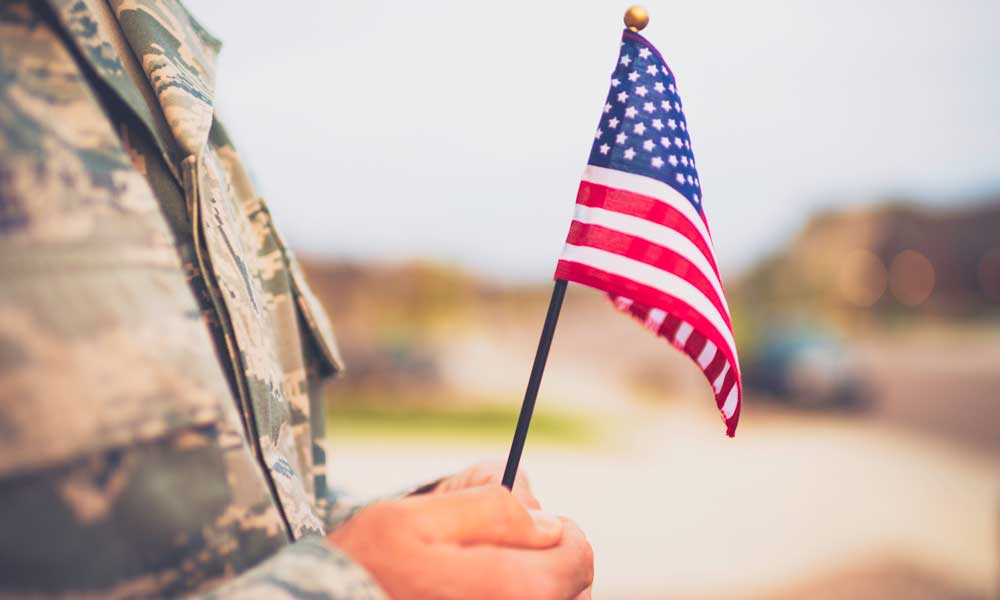Veteran Affairs mortgage loans, commonly called VA loans, are home mortgage loans the U.S. Department of Veterans Affairs guarantees to make it easier for veterans to get approved to buy a home. The loans are offered at many banks throughout the country and have a few other perks such as not requiring mortgage insurance payments or possibly avoiding a down payment. Some loan companies offer special interest rates to veterans taking out these mortgages because the VA-backed guaranty lessens the lender’s risk. As it is with all VA benefits, there are requirements that dictate eligibility for a VA loan. Before you apply for a VA loan, you must first obtain a certificate of eligibility (COE). The COE application is VA form 26-1880 and can be handled in paper form or through the VA’s e-benefits portal.
Who is Eligible for a VA loan?
In general, those currently on active duty, Guard and Reserve members, veterans, spouses of veterans, and members of certain other organizations are eligible to apply for VA loans. The VA home loan program covers a significant number of veterans. However, length of service and type of service are a factor when determining if a veteran is eligible for the VA loan program. We cover the questions asked to determine if you qualify below. Those questions are, When did you serve?, Where did you serve?, and When did you separate?
VA Loan Eligibility: When Did You Serve?
When you served in the military, length of service, and whether or not the U.S. was under wartime makes a difference in eligibility. The service dates and conditions listed below can be used to determine initial eligibility. When you apply, the VA will make a final decision as to whether you qualify for the VA loan program.
Active Duty members currently serving become eligible after at least 90 days of continuous service. When you separate or come off of active duty, eligibility must be reestablished under the veteran’s guidelines.
Wartime service for the following conflicts requires:
-
At least 90 days active duty without a dishonorable discharge.
-
Or less than 90 days of active duty service if the discharge was due to a service-related disability.
| Conflict | Date Served |
|---|---|
| World War II | September 16, 1940 through July 25, 1947 |
| Korean War | June 27, 1950 through January 31, 1955 |
| Vietnam War | August 5, 1964 through May 7, 1975 |
For the Gulf War, eligibility requires:
-
24 months of continuous active duty, at least 90 days service that completed the full term of your ordered active duty, each without a dishonorable discharge.
-
Or discharge for hardship, an early out, reduction in force, or convenience of the government.
-
Or discharge due to a condition that interfered with your duty or there was a compensable service-related disability.
-
Or, if less than 90 days of active duty service, discharge was due to a service-related disability.
| Conflict | Date Served |
|---|---|
| Gulf War | August 2, 1990 start date. VA does not yet have an end date at this time. |
Peacetime service for the following dates require:
-
At least 181 days of continuous active duty without a dishonorable discharge.
-
Or less than 181 days of continuous active duty if you were discharged due to a service-connected disability.
| Service Grade | Peacetime Dates Served |
|---|---|
| All service members | July 26, 1947 through June 26, 1950 |
| All service members | February 1, 1955 through August 4, 1964 |
| Enlisted | May 8, 1975 through September 7, 1980 |
| Officers | May 8, 1975 through October 16, 1981 |
Where Did You Serve: Reserve and National Guard
There are special rules for those who serve in the Reserve and National Guard. You may still be eligible even if you do not meet conditions under any other section of the eligibility requirements. First, you must have served at least six credible years in the Selected Reserve or National Guard. This service includes being a member of an active unit, actually attending your required weekend drills and two-week annual training sessions. Then you must meet one of the following requirements to be considered for the VA home loan program:
-
Received an honorable discharge.
-
Placed on the retired list.
-
Still serving in the Selected Reserve.
-
Transferred to Standby Reserve or a part of the Ready Reserve outside the Selected Reserve after honorable service.
-
Discharged for a service-connected disability with less than six years of service (some cases).
VA Loan Eligibility: When Did You Separate?
The rules are a little more uniform after a specific separation date, although the date is different for enlisted men and women and officers.
If you left after the separation dates listed below, you might be eligible for the VA loan program if:
-
You served 24 months of continuous active duty without a dishonorable discharge.
-
Had at least 181 days of active duty without dishonorable discharge or completed your full active duty ordered term.
-
Had at least 181 days active duty but were discharged due to hardship, early out, government convenience, force reduction, or a condition that interfered with your duty.
-
Had a compensable service-connected disability.
-
Served less than 181 days of active duty but discharged for a service-connected disability.
| Service Grade | Peacetime Dates Served |
|---|---|
| Enlisted | Separated after September 7, 1980 |
| Officers | Separated after October 16, 1981 |
Special Rules for Spouses to Obtain a VA Loan
It is often said that spouses serve with their service members and the VA does not exclude spouses from the VA home loan program.
Spouses who lost their partners due to the service may be eligible under one of the following rules:
-
The spouse is of a deceased service member who died during service or because of a service-connected disability and the spouse has not remarried.
-
The spouse is of a service member is missing in action or a current prisoner of war.
-
The spouse is a surviving spouse of certain totally disabled veterans whose disability might not have been the cause of the veteran’s death.
-
The spouse is designated a surviving spouse and did not remarry until at least age 57, and no sooner than December 16, 2003 (this category was only allowed to apply for the program through December 15, 2004).
In general, if a spouse who lost their partner due to the service has remarried, they are no longer eligible for the program.
VA Loan Requirements: Rules for Non-Veterans
The VA home loan program also covers some beneficiaries. While general guidelines are available, speak to a VA representative, who can advise you on the specific details. The beneficiaries are certain U.S. citizens who served with the militaries of our allies in WWII, were merchant seamen in WWII, are cadets or midshipmen in our military academies, Public Health Service officers, or officers of the National Oceanic and Atmospheric Administration. The full list is available by speaking with a VA loan program representative. The VA has regional loan centers to assist in determining eligibility and answering other questions. You can find your closest VA regional loan center office contact information through the VA website.
VA Loan Eligibility with a Dishonorable or Other-than-Honorable Discharge
While service members with other than honorable discharges are generally not eligible for the VA loan program, service members may be able to have their discharge upgraded to qualify for VA loan and other VA programs. The request for a discharge upgrade goes through the Department of Defense (DoD). A favorable outcome often hinges on if the service member can show the discharge was connected to PTSD or other mental conditions, a traumatic brain injury (TBI), sexual assault or harassment, or sexual orientation.
Service members can also request the VA review their case for the possibility of receiving an “honorable for VA purposes” designation. Documentation supporting your argument is required, and it is recommended that the veteran secure an advocate such as a lawyer or the Veterans Service Organization (VSO) to assist through the process, which can take about a year.
VA Loan Requirements: The Home Must be Eligible
Even if you qualify for a VA loan and receive your COE, the home you wish to buy must also meet requirements. A VA-certified appraiser will inspect the home and follow a checklist to see if the property meets VA standards. Most real estate agents are very familiar with this list and can help guide you through the process, so you only consider homes likely to pass inspection. It is important to note that while there are conditions under which mobile homes can meet VA standards, they are involved, and the VA inspector can easily deny a mobile home regardless of its qualifications.
Can You Get a Second VA Loan?
If you have already used your VA home loan, there are some cases where you can restore your entitlement and get another VA home loan. In general, if your VA loan is transferred to another qualified veteran under their eligibility, or if you sold the home and paid the loan in full, or if you paid the loan in full but have not sold the home, you can request restoration of your eligibility. This request is handled with the same form as your original COE, VA form 26-1880.


